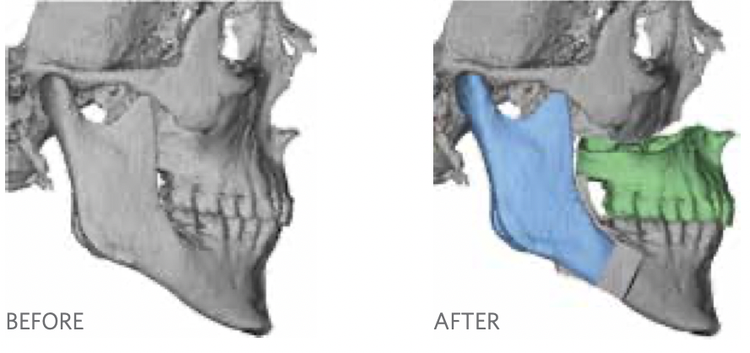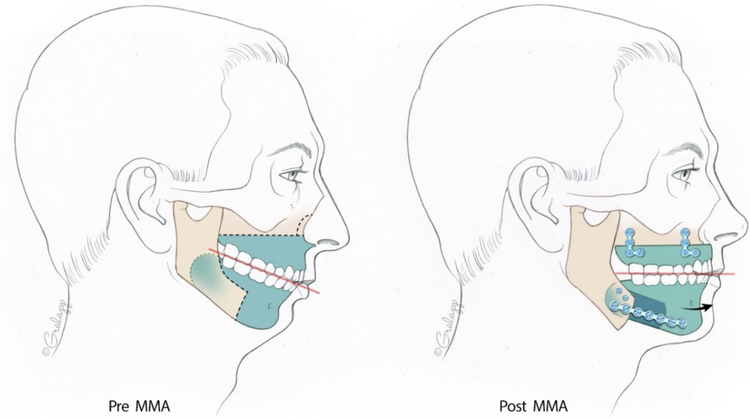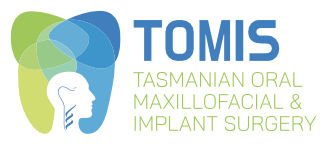Maxillomandibular Advancement Surgery: Obstructive Sleep Apnea
- What is Sleep Apnea?
- Common symptoms of Obstructive Sleep Apnoea (OSA):
- Is Sleep Apnea dangerous?
Maxillomandibular advancement (MMA), also known as double-jaw surgery or bimaxillary advancement surgery, is the main form of skeletal surgery for treatment obstructive sleep apnea (OSA).
MMA is generally considered for adult patients who are unable to tolerate continuous positive airway pressure (CPAP).


Obstructive sleep apnoea is the result of a restricted airway and can greatly impact your general health.
Sleep apnoea occurs when a patient experiences a restriction of the airway. Because of this restriction, the body doesn’t receive enough air whilst you sleep, causing you to stop breathing for a short period of time.
- Constant feeling of being tired
- Long snoring or choking whilst sleepin
- Restless sleep
- Waking up regularly at night
- Grinding your teeth whilst asleep
- Waking up with a sore jaw
- Waking up with headaches
- Feeling out of breath, tired or thirsty upon waking up
When left untreated, obstructive sleep apnoea can lead to a number of serious health conditions, including hypertension, diabetes, stroke, and heart disease. For this reason, it is considered a serious sleep disorder.
Besides putting you at risk of serious health problems, obstructive sleep apnoea can also lead to poor performance at work, and underachievement and behavioural problems in children. Issues like ADHD and depression may worsen as a result of poor sleep and daytime sleepiness.
The aim of this surgery is to open the airway where it obstructs during sleep. This most often occurs behind the soft palate and tongue. By moving both the upper and lower jaws forward with MMA, these two “choke points” can be relieved.
Dr. Garg’s team will take a detailed medical and sleep history, focusing on issues relevant to your OSA.
If you have not had a sleep study, one will be performed. This an essential part of determining your candidacy for MMA surgery.
If both you and Dr. Garg feel that MMA surgery is the best treatment option, Dr. Garg will arrange dental impressions, preoperative photos, dental x-rays and an in office low dose 3D CT scan. This 3D CT scan will be used for surgical planning.
If you are interested in correcting your bite as part of the MMA procedure, a consultation with an orthodontist can be incorporated into the surgical planning process at this time.
Few days prior to your surgery, the CT scan images and dental models will be used to create a precise digital 3D model of your jaws and skull. This virtual model creates a very accurate representation of the relationship of the upper and lower jaw.
This 3D virtual model is used to precisely plan the surgical bony cuts (osteotomies) and movements of the jaws. Measurements of important anatomical landmarks and their relationship to one another are made. These measurements are available for reference during the surgery.
Dental splints are created and printed using a 3D printer. These splints are used during the surgery to assist in placing the jaws exactly where they need to be to keep the patient’s bite the same as compare to before the surgery. Below is a representation (before and after) of the movements of both jaws.
- Pain: You can expect some pain, but it is uncommon to experience extreme pain after the operation. By comparison, this surgery is less painful than having your tonsils removed. With the use of pain medication, patients generally complain of a dull, achy pain and a feeling of discomfort due to the swelling in the face.
- Nausea and Vomiting: Some patients experience nausea and vomiting following completion of the surgery. This commonly occurs asa reaction to the anesthetic medications. Nausea and vomiting are managed with anti-nausea medications during the hospital stay. If vomiting does occur, the dental elastics should be cut immediately.
- Bleeding: Oozing is very common following for the first 1-3 days following surgery. To help manage this, you are encouraged to remain inclined (with the head of bed elevated to at least a 30-degree angle).
- Swelling: Swelling is expected following surgery. It is most prominent in the lips and will become more pronounced over the first post-operative week
- Sensory changes around the face
- Changes in occlusion (your bite)
- Limited mouth opening (trismus)
- Infection
- Damage to teeth
- Nasal Obstruction
Note: this is not a comprehensive list – your surgeon will go through the potential complications and risks during your consultation.

